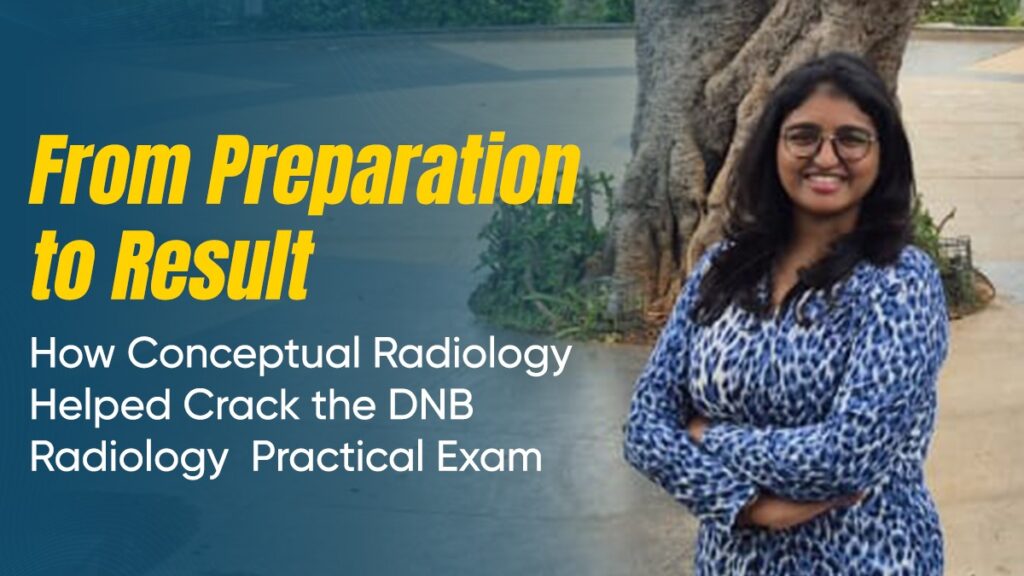Congenital Urinary Tract Anomalies (CAKUT) – Things We Often Miss While Reporting

Congenital urinary tract anomalies are usually grouped under one term — CAKUT, which stands for congenital anomalies of the kidney and urinary tract. Most people think this topic is only about the kidneys, but in reality, it includes the entire urinary system, from the kidneys to the ureters, bladder, urethra, and even urachal structures. This […]
Should You Choose Radiology in NEET PG Counselling? Will AI kill it? Real Career Insights with Dr. Zainab Vora

If you’re in the middle of NEET PG counselling and radiology is on your mind, you’re probably hearing a lot of noise – “best branch”, “AI will kill it”, lots of confusion. Instead of deciding out of fear or FOMO, you need a clear, honest picture of this. AI and Radiology: Will ChatGPT Take Your […]
NEET SS Radiology in One Month: Which Platform Truly Helps You Prepare Best?

Dear residents,As the NEET SS Radiology exam is just around the corner, the pressure is real—and completely understandable. This exam is known for testing you beyond basic knowledge. It’s packed with heavy image-based questions, tricky clinical scenarios, and situations where your interpretation skills matter more than anything else. And honestly, this isn’t an exam you […]
From Preparation to Result: How Conceptual Radiology Helped Crack the DNB Radiology Practical Exam

DNB practical exam results have been declared, and once again, Conceptual Radiology continues to establish itself as one of the most reliable platforms for radiology residents preparing for their DNB and MD exams. With every exam season, we witness more students achieving exceptional results—thanks to the consistent, high-yield, and exam-oriented training provided through the platform. […]
What is DNB in Radiology? Know Everything About It

If you’ve ever aspired to become a radiologist and are exploring postgraduate options after MBBS, you’ve probably heard about DNB Radiology. But what exactly is it? Who can pursue it, and what does it involve? This blog will explain everything about DNB Radiology, from eligibility, course phases, and training pattern to exams, so that even […]
From Confusion to Clarity: How Conceptual Radiology Helped Dr. Divya Ace DNB with 243 Marks

When Dr. Divya Drishti from Jammu took up DNB Radiology at Holy Family Hospital, Delhi, she was full of apprehension. Coming from GMC Jammu, where exposure to DNB was limited, she wasn’t sure what to expect. “Most people back home didn’t even know about DNB,”. But encouragement from seniors and her own determination helped her […]
Cracking DNB Final Theory Exam 2025: Dr. Monali’s 272 Marks Success Story with Conceptual Radiology

Cracking DNB Final Theory Exam 2025: Dr. Monali’s 272 Marks Success Story with Conceptual Radiology Passing the DNB Final Exam is one of the most challenging milestones on the path to becoming a radiology resident. And Dr. Monali achieved such good marks, 272, it’s a moment of celebration! This year, Dr. Monali achieved that feat […]
DNB Final Theory Exam June 2025 Success Story – Dr. Anupma (Score 254): A Heartfelt Conversation with Dr. Zainab Vora

DNB Final Theory Exam June 2025 Success Story – Dr. Anupma (Score 254): A Heartfelt Conversation with Dr. Zainab Vora Every success story has its own struggles, sacrifices, and turning points. This is true for Dr. Anupma, who recently cleared her DNB Radio Diagnosis Final Theory Exam with an impressive score of 254. Dr. Zainab […]
How Dr. Sahithi Yada Cracked the DNB Final Exam (Score 267): A Talk with Dr. Zainab Vora

How Dr. Sahithi Yada Cracked the DNB Final Exam (Score 267): A Talk with Dr. Zainab Vora Cracking the DNB Radiology final exams is no small feat, and Dr. Sahithi Yada has done it with an impressive score of 267. In an insightful conversation with Dr. Zainab Vora, she shares her preparation strategy, her journey […]
Major Dr. Poornima’s Inspiring Journey with Conceptual Radiology: Army Duty to DNB Radiology Success

Major Dr. Poornima’s Inspiring Journey with Conceptual Radiology: Army Duty to DNB Radiology Success Have you ever heard the story of someone who is preparing for postgraduate exams while serving the nation? Sounds interesting…. So this is the story of Major Dr. Poornima subscriber of Conceptual Radiology, who proved that with the right strategy and […]
